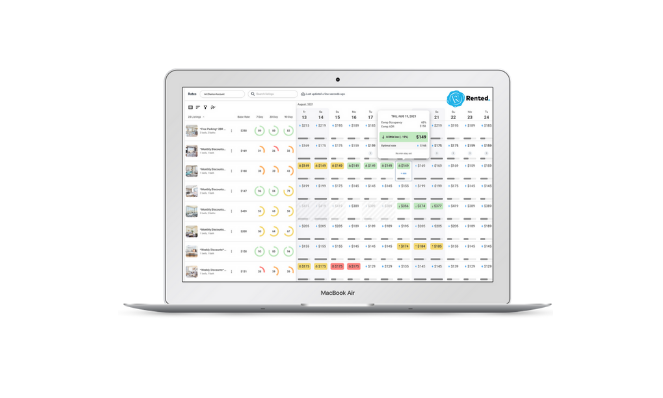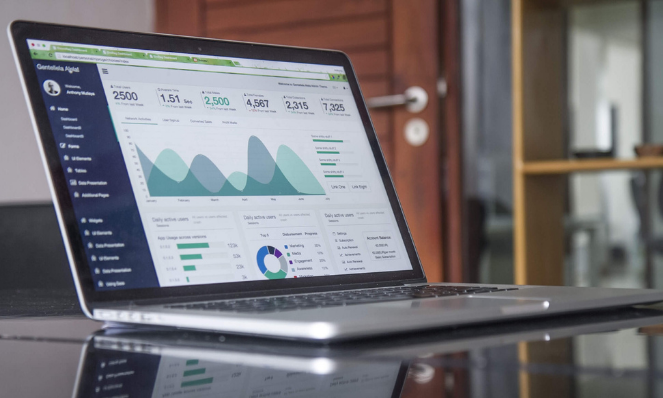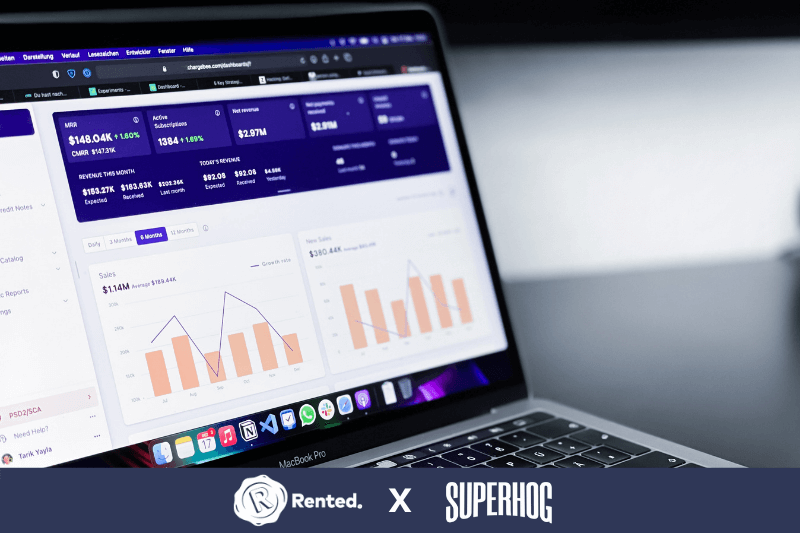This is a guest post by the team at Rented, who provide revenue management technology, tools, and services to help vacation rental managers optimize their portfolio of properties.
Starting on a revenue management journey can be complex, so let’s start with the groundwork.
Revenue management defined:
“A strategy that uses data to predict consumer behaviour to optimize product availability and price for maximum revenue growth.”
Supply and demand in the vacation rental industry
The rules of supply and demand are different in the vacation rental industry than they are in any other.
Because yes, a hotel room is a tangible product, but it’s also a perishable commodity. As soon as that room is occupied, it vanishes from the inventory.
Based on a variety of external factors, like seasonality, consumer behaviour, or big events in the area, inventory is therefore in constant flux.
Price is elastic if there is a clear relationship between occupancy and a unit’s price. Drop the price and raise occupancy or vice versa.
For example, let’s say we charge $100 a night at our 50-room hotel and end up with 50% occupancy. If everything else was business as usual, it would make sense that lowering the price by $5 would increase our occupancy by 5%.
But what if you drop your price by $5 and get a 10% increase in occupancy? This means there’s no longer a one-for-one relationship between occupancy and price, making the pricing inelastic.

Key aspects of vacation rental revenue management
The foundation for a successful vacation rental revenue management strategy includes:
- Average Daily Rent (ADR): This is the average nightly rent for a property (or a cluster of properties), calculated by the total rental revenue divided by the total nights sold.
- Occupancy Rate: The number of occupied nights for a property or a group of properties.
- Revenue Per Available Room Night (RevPAR): This number is a more accurate way of judging the performance of a rental (or cluster of rentals) because it takes the occupancy rate into account. It also excludes nights that aren’t bookable by guests for operational reasons, like an owner hold or maintenance blocks.
- Gross Rent: What you charge a guest before deducting expenses.
- Gross Revenue: The sum of rent, fees, and any other income considered “revenue.”
Putting it all together
Dynamic pricing works effectively when we can strike a balance between a competitive price that still encourages an increase in occupancy, without taking too much of a hit on our revenue.

– Art, Rented’s dynamic pricing tool
Data is king when it comes to revenue management
The modern hospitality industry runs on data, especially when it comes to dynamic pricing.
The volume and accuracy of the data can determine the agility of your revenue management strategy, and with the introduction of the internet, data of all sorts is in abundance.
Vacation rental data types
There are two major types of data in particular that are relevant to revenue management: scraped data, and actual or authoritative data.
- Scraped data is from a third-party source. There are various different technologies that extract data from other relevant sources such as Airbnb (or similar property management sites), Expedia, and Booking.com.
- Authoritative data comes from you. This is all of the data that you have stored in your own property management system.
- Lagging data are your performance indicators. It’s “measurable, and changes only after trends or patterns are established.”
- Leading data are your prediction indicators. You can use this kind of data to make future decisions.
You are your best source of data
So where do you get good, actionable data for your dynamic pricing strategy?
Start with what you already have! Data from your property management system is the best source—you’re probably using it to make operational decisions right now.
When you dig into your own data, you learn all sorts of interesting tidbits that can be useful for vacation rental revenue management. Useful data can include:
- The number of check-ins on a given day
- The number of guests staying per property
- The number of check-outs on a given day
Depending on how long you’ve been in business, your reservations data can show you the differences in reservations over various lengths of time, from year-over-year to week-over-week.
These data points can start to shape your dynamic pricing strategies.

Implementing a dynamic pricing strategy
We’ve defined revenue management and the key metrics vacation rental managers will need to evaluate for their listing, in order to determine a pricing strategy.
Using this information, how do you actually implement this strategy to see results for you and your homeowners?
Many property managers set weekly or monthly rental rates well in advance, but it’s important not to overlook one major benefit: being able to adjust these dynamic pricing options according to what works best for the property at any given point and time.
When you have real-time market data to inform these decisions, you will produce results that your homeowners will appreciate, increasing your lifetime customer value. So how do you get started?
- Manually manage rates: This can be time-consuming as you will need to review competition, evaluate outside influences such as events, news, weather, and more, AND then make adjustments for each listing.
- Hire a contract or in-house revenue manager: Hand it off, delegation is awesome! But this comes at a price. Hiring a full or part-time employee to manage pricing for your inventory can allow you to focus on other aspects of your business, but recruiting is not always easy. Hiring a contractor has risks, and the process for both can be cumbersome and takes time to find the right resource.
- Implement dynamic pricing and revenue management software: More and more vacation rental managers are implementing dynamic pricing tools. Used properly, and with the right software, the ROI on the investment should be significant.
- Blend tools with internal resources! With a tool that is built for vacation rental managers by a revenue management team, you should have a simple, yet powerful set of resources that allow you to be detailed in your approach, yet easy to use. If this sounds like your solution, you should meet Art, Rented’s Automated Rate Tool. Simple. Powerful. Rented.
